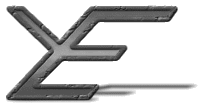The server interface is the interface to the file storage system (whether it is the normal file system, a database, or other versioning repository) that stores the information that is passed through the middle interface. Because the server interface is only accessed through the middle interface, this allows any server storage to be used, and/or interchanged at will, with no visible change to the users, and allows new storage options to be used as and when they become available. Because all access comes through the middle interface, all file storage systems should be compatible with each other.
The server interface has a specific set of methods that it must define and for which it must return the appropriate result, but not all methods that the middle interface supports need to be provided. This is because the middle interface has a default set of actions for specific methods that use the lower-level methods that are supplied by the server interface. There are some methods available in the middle interface that do not need to be implemented if their functionality is not required. There are also some that have default functionality, but should be extended by the server interface to allow the full range of responses, provided that the file storage system can supply the appropriate results.
The rest of the engine
Those interfaces (described in the preceding three sections, the user, middle, and sever interfaces) do the majority of the work in the servlet application. There are other servlets that help these three, and enable other features such as error logging and survey responses.
The Preference servlet looks after all the preferences and options for the system. This stores the information about the server, such as the name of the static and dynamic web sites, directory locations, and file names. This preference file is first looked for by the servlet in the location that the servlet is being run from, and then the home directory for the user and finally the main Java home directory. The preference file is loaded each time the servlet is loaded or reloaded.
The USL part of the engine is a replacement for URLs, mainly based on the fact that the information sources that can be used by the engine are not limited to normal files and web sites that can be normally accessed be a URL.
The utility classes include the logging and debugging class that makes it easier to locate and fix problems by directing specific debugging information to a specified place.
| Previous: | 4.10 Middle interface |
| Next: | 4.12 Java servlets |
